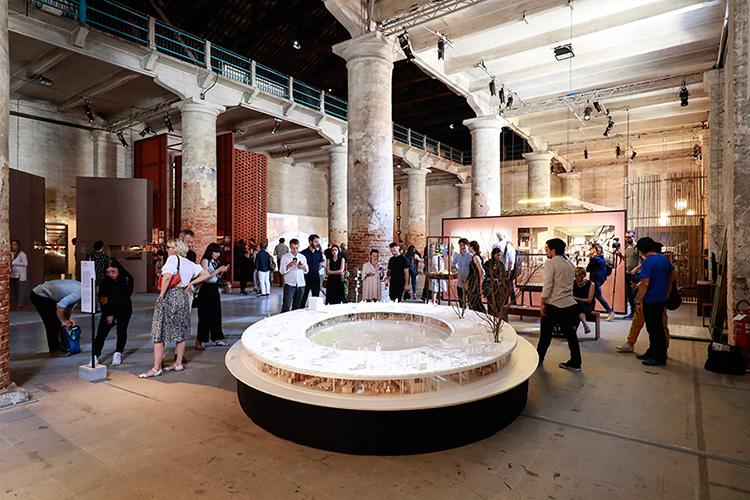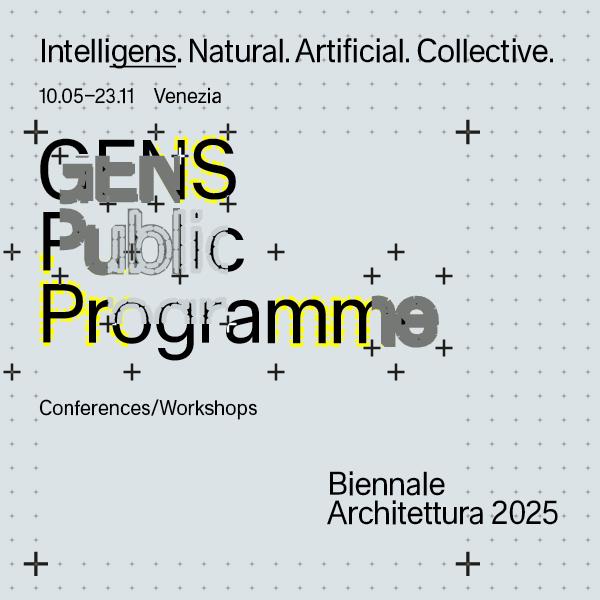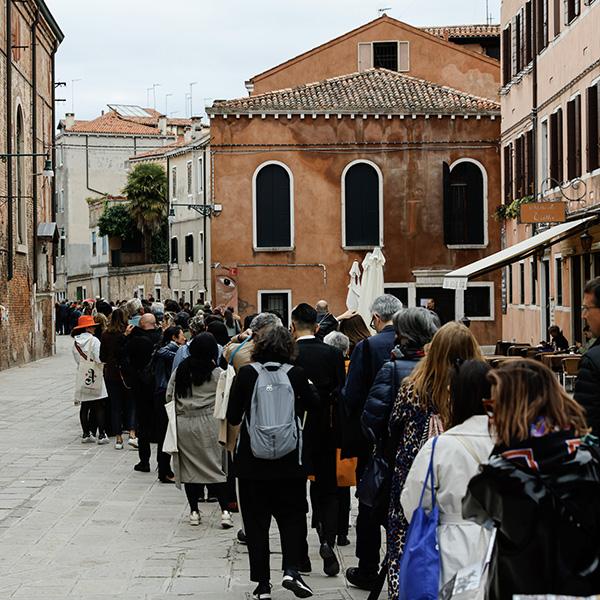
A Circular Economy Manifesto
This Manifesto calls on Participants in the Biennale Architettura 2025 and on the Participating Countries to tackle the built environment's core challenges and collaborate to produce a truly circular Exhibition.
Towards the Biennale Architettura 2025
Carlo Ratti, as the Curator of the 19th International Architecture Exhibition of La Biennale di Venezia, titled Intelligens. Natural. Artificial. Collective (Venice, Arsenale and Giardini, 10 May-23 November 2025), launches a Circular Economy Manifesto developed with guidance from Arup and input from the Ellen MacArthur Foundation.
This Manifesto calls on Participants in the 19th International Architecture Exhibition and on the Participating Countries to tackle the built environment's core challenges and collaborate to produce a truly circular Exhibition. The commitment is to creating spaces and pavilions that are not just temporary showcases but bold examples of circular design that offer lasting sustainability legacy. The goal is to eliminate waste, circulate materials and regenerate natural systems proving that architecture and our built environment can coexist harmoniously with our planet.
The Manifesto strengthens La Biennale di Venezia’s commitment to the crucial goal of combating climate change by promoting a more sustainable model for the design, installation, and operation of all its events and activities.
Dedicated to sustainable development, Arup is a collective of 20,000 designers, advisors and experts working across 140 countries. Founded to strive for humanity and excellence in everything that they do, Arup collaborates with clients and partners, using imagination, technology and rigour.
The Ellen MacArthur Foundation is an international charity whose mission is to accelerate the transition to a circular economy in order to tackle some of the biggest challenges of our time, such as climate change, biodiversity loss, waste, and pollution.
A Circular Economy Manifesto
developed by Carlo Ratti
with guidance from Arup and input from the Ellen MacArthur Foundation
- Our goal is to demonstrate that architecture and the built environment can coexist harmoniously with our planet, by eliminating waste, circulating materials and regenerating natural systems
- We call on designers, planners, cities, and participants of the Biennale Architettura 2025 to rethink our approach to design and embrace circular and nature-positive principles
- We commit to creating pavilions and spaces that are not just temporary showcases but offer examples of bold circular thinking and create lasting legacies
In an era defined by environmental urgency, the 19th International Architecture Exhibition of La Biennale di Venezia offers an exploratory arena for sustainable, transformative design. As a collective of architects, designers, and innovators, we are called to radically rethink our approach to our built environment, embracing the principles of a circular economy and leveraging all forms of intelligence to do so.
Our sector, the built environment, is critical as we are responsible for 40% of global energy related carbon emissions and the consumption of 40% of all raw materials. Moving away from a ‘take, make, dispose’ model, governments including the European Union are pushing to accelerate the transition towards circularity, but the current pace of change is still inadequate.
This Manifesto calls on designers, planners, cities, and participants of the Biennale Architettura 2025 to tackle the core challenges and collaborate to create a truly circular exhibition. We commit to creating pavilions and spaces that are not just temporary showcases but bold examples of circular design that offer a lasting sustainability legacy. Our goal is to eliminate waste, circulate materials and regenerate natural systems proving that architecture and our built environment can coexist harmoniously with our planet.
This Manifesto asks you to draw on our wealth of intelligence, from our ever-growing artificial computing power to our collective wisdom, to rethink your approach towards a circular and nature-positive design practice. Harnessing nature’s intelligence, where nothing is wasted, this Circular Manifesto is a radical call for courageous ideas, ingenious experimentation and candid collaboration, to propose scalable, achievable solutions for a more sustainable built environment. Long after the Biennale Architettura 2025 itself has finished, we wish to create and catalyse real-world impact.
Impact at scale requires fundamental transformation.
We want you, as the Participants in the 19th International Architecture Exhibition and as innovators in the fields of design and architecture, to demonstrate leadership.
We aspire for this Manifesto to activate you as the most influential organisations, committed to action, demonstrating leadership in the transition to a circular economy by articulating comprehensive strategies in response to this Manifesto; setting ambitious targets and tracking progress; leveraging your organisation to deliver on your ambitions, working with stakeholders to catalyse circular solutions; and demonstrating impact on business, climate and nature.
These are the seven guiding circular design principles which will guide us:
- Design, construct, operate and deconstruct with a Whole-Life Carbon approach in mind. (e.g. CO2kge/functional unit (e.g. visitor), Conduct LCAs, Provide BoQs)
- Design to maximise the use of reclaimed, recycled or renewable materials or existing exhibitions/assets, ideally locally sourced – aim for not less than 50% per weight.
- Design out any construction waste – aim for zero waste to landfill.
- Design for modularity and prefabricated designs with light
-weight materials and simple connection systems, avoid unnecessary components. - Design for easy deconstruction – aim for a 100% recycling or reuse of materials. Work closely with the supply chain end-to-end.
- Design out hazardous and polluting materials that have a negative impact on the health of people as well as nature.
- Design for nature – enhance the ecological value of the site and promote the efficient use of water – aim for buildings to provide the same ecosystem services as the local environment.




